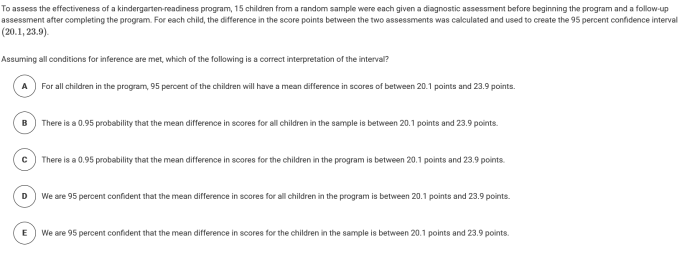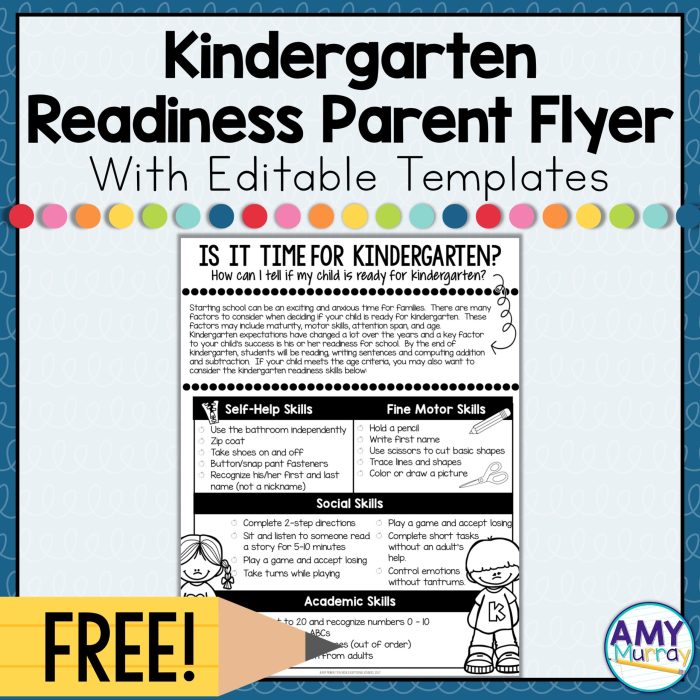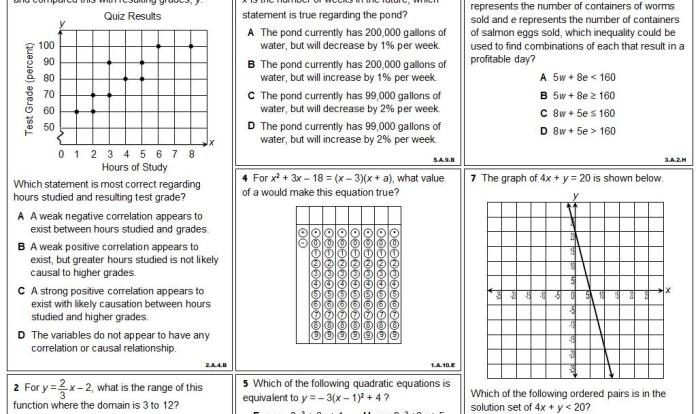To assess the effectiveness of a kindergarten readiness program – As the importance of kindergarten readiness takes center stage, this comprehensive guide delves into the essential aspects of assessing the effectiveness of kindergarten readiness programs. This in-depth exploration provides a thorough understanding of the various methods, metrics, and implications involved in evaluating the success of these programs, ensuring their efficacy in preparing young learners for academic and social success.
This guide commences by highlighting the significance of kindergarten readiness assessments, exploring the diverse methods employed to gauge children’s developmental milestones. It then delves into the evaluation of program effectiveness, discussing the importance of utilizing multiple measures and specific metrics to accurately assess program outcomes.
Furthermore, the guide elucidates the process of analyzing and interpreting data from assessments and evaluations, emphasizing the use of statistical methods and the derivation of meaningful conclusions.
Kindergarten Readiness Assessment

Kindergarten readiness assessments are essential for identifying children who may need additional support to succeed in kindergarten and beyond. By assessing children’s skills and knowledge prior to kindergarten entry, educators can tailor instruction to meet individual needs and ensure a smooth transition to formal schooling.
Various methods are used to assess kindergarten readiness, including:
- Observation-based assessments: These assessments involve observing children in natural settings, such as during play or group activities.
- Standardized tests: These assessments are administered to all children and provide a standardized measure of skills and knowledge.
- Portfolio assessments: These assessments collect a variety of work samples that demonstrate children’s progress over time.
Effective kindergarten readiness assessment tools are reliable, valid, and developmentally appropriate. They should also be easy to administer and score, and provide meaningful information that can be used to plan instruction.
Program Effectiveness Evaluation

Evaluating the effectiveness of kindergarten readiness programs is crucial for ensuring that they are meeting the needs of children and improving kindergarten readiness outcomes. Various methods can be used to evaluate program effectiveness, including:
- Pre-post comparisons: These evaluations compare children’s skills and knowledge before and after participating in a program.
- Quasi-experimental designs: These evaluations compare children who participate in a program to a comparison group of children who do not.
- Longitudinal studies: These evaluations follow children over time to track their progress and assess the long-term impact of a program.
It is important to use multiple measures to evaluate program effectiveness, as no single measure can capture all aspects of a program’s impact. Some specific metrics that can be used to measure program effectiveness include:
- Kindergarten readiness scores
- Kindergarten attendance and engagement
- Academic achievement in later grades
Data Analysis and Interpretation: To Assess The Effectiveness Of A Kindergarten Readiness Program
Data from kindergarten readiness assessments and program evaluations must be carefully analyzed and interpreted to draw meaningful conclusions. Statistical methods, such as t-tests and analysis of variance (ANOVA), can be used to analyze data and determine if there are significant differences between groups.
When interpreting data, it is important to consider the following factors:
- The size of the sample
- The reliability and validity of the assessment tools
- The potential for bias in the data
By carefully considering these factors, educators and researchers can draw meaningful conclusions from data analysis and make informed decisions about kindergarten readiness programs.
Reporting and Dissemination

Findings from kindergarten readiness assessments and program evaluations should be reported and disseminated to stakeholders, including parents, educators, and policymakers. Reporting should be clear, concise, and easy to understand.
Different methods for reporting findings include:
- Written reports
- Presentations
- Webinars
Effective reporting formats should include:
- A summary of the findings
- A discussion of the implications of the findings
- Recommendations for future research or action
Implications for Practice
Findings from kindergarten readiness assessments and program evaluations can have significant implications for kindergarten teachers and administrators. By understanding the skills and knowledge that children need to be successful in kindergarten, educators can tailor instruction to meet individual needs.
Some specific recommendations for how to use findings to improve kindergarten readiness programs include:
- Provide targeted instruction for children who are not meeting kindergarten readiness benchmarks.
- Collaborate with parents and caregivers to support children’s kindergarten readiness.
- Advocate for policies that support kindergarten readiness.
By implementing these recommendations, kindergarten teachers and administrators can help ensure that all children are prepared for success in kindergarten and beyond.
Answers to Common Questions
What are the key components of a kindergarten readiness assessment?
Kindergarten readiness assessments typically evaluate children’s cognitive, social-emotional, and physical development. They may include measures of language and literacy skills, problem-solving abilities, self-regulation, and gross and fine motor skills.
How can I ensure the reliability and validity of my kindergarten readiness assessment data?
To ensure reliability, use standardized assessments with established psychometric properties. For validity, consider the alignment of the assessment with kindergarten curriculum and standards, and gather data from multiple sources (e.g., teachers, parents, observations).
What are some effective strategies for improving the effectiveness of kindergarten readiness programs?
Effective strategies include providing high-quality early childhood education experiences, implementing evidence-based curricula, fostering collaboration between teachers and parents, and providing ongoing professional development for teachers.



